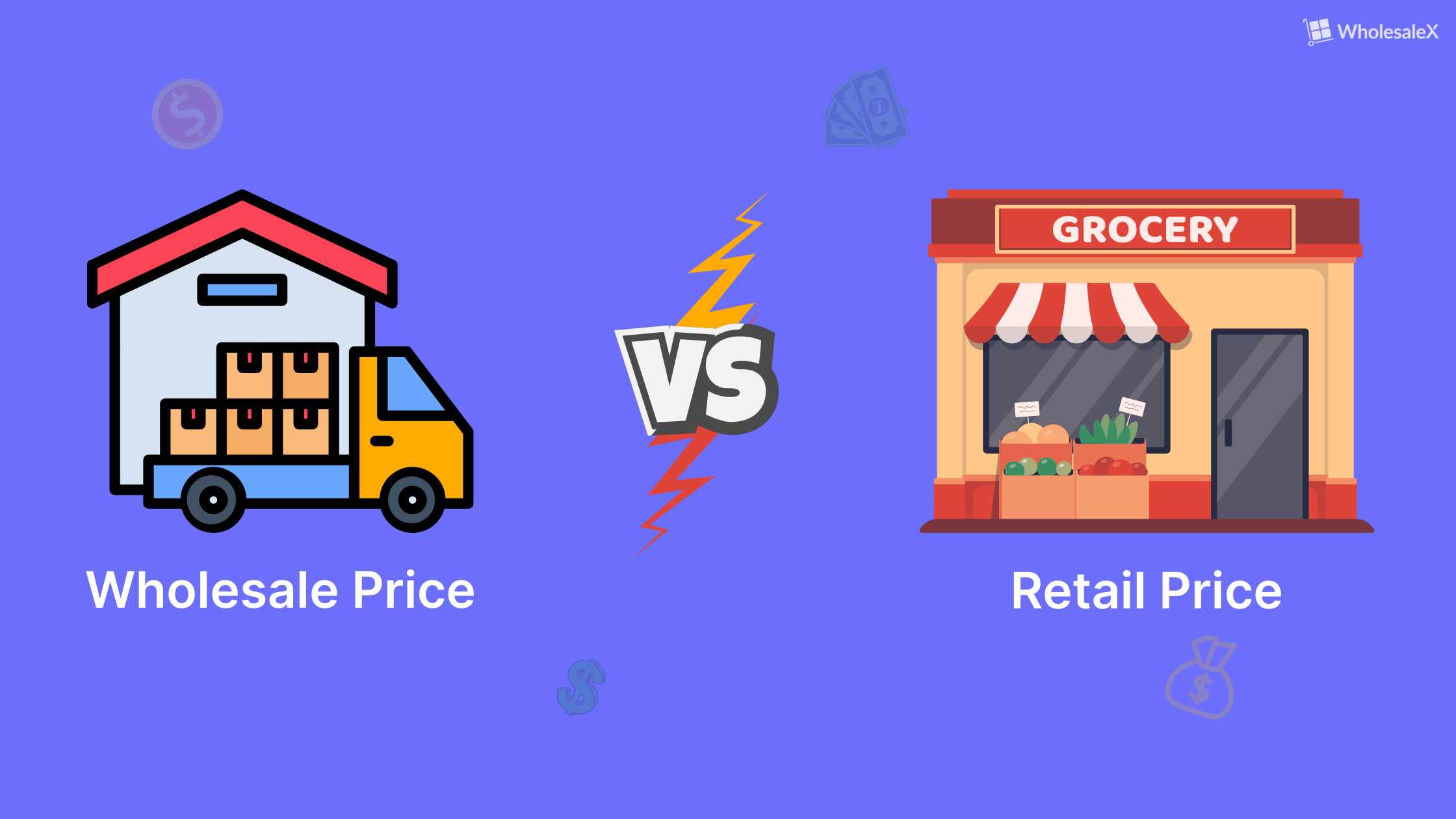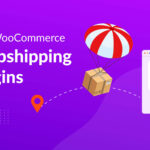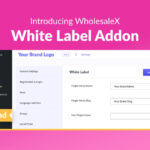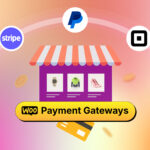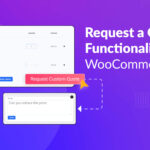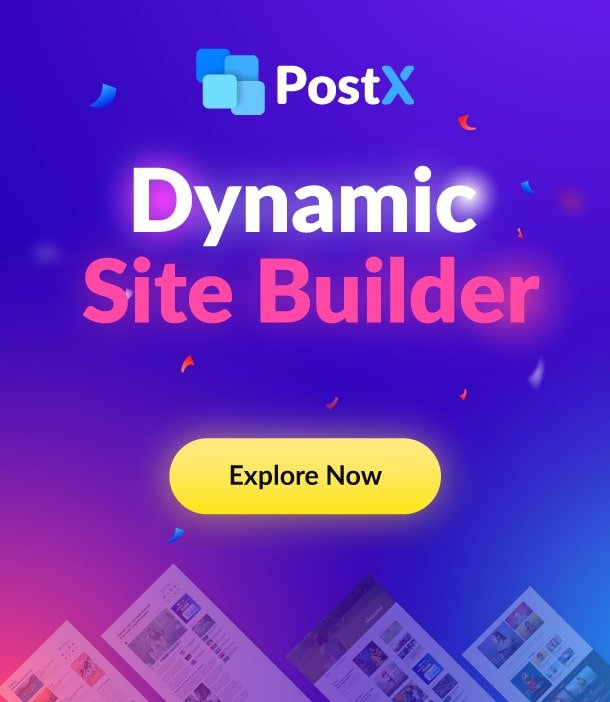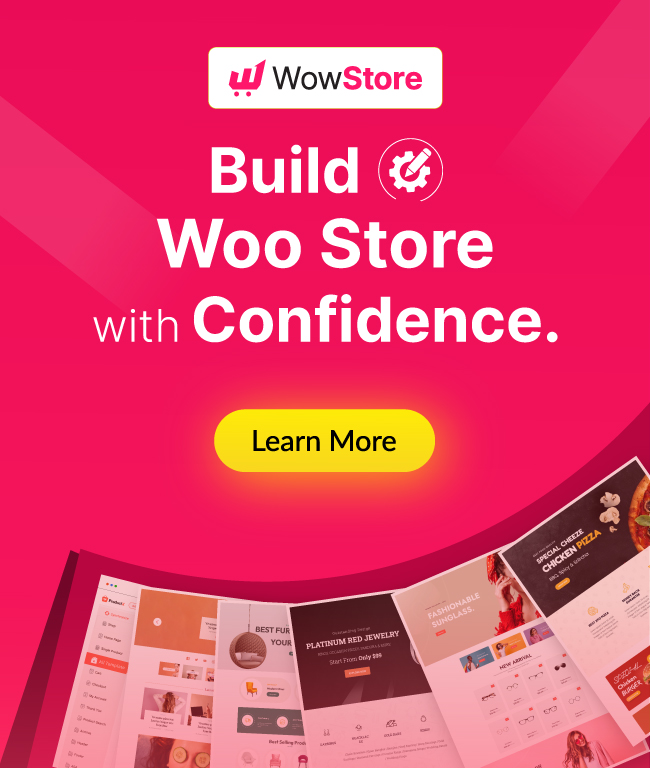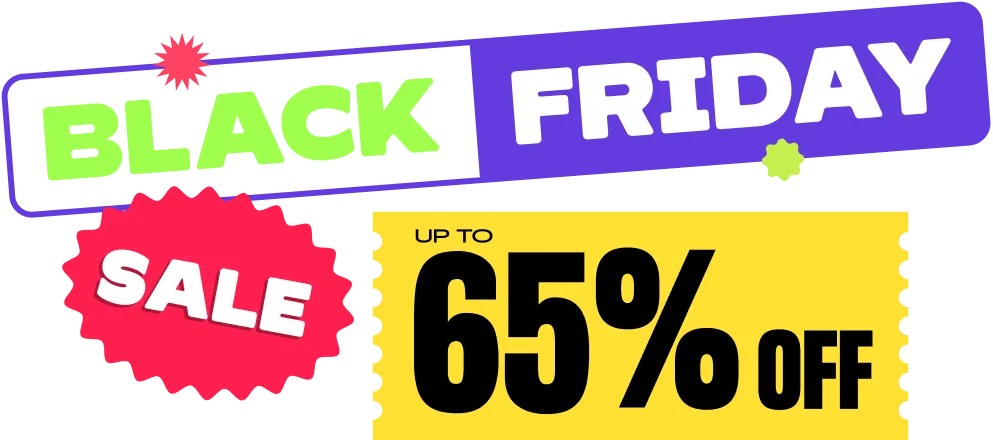The main difference between wholesale and retail prices is that the wholesale price is the cost at which goods are sold in bulk to businesses, while the retail price is the final cost charged to consumers for individual items.
In simple terms, wholesale is about volume with lower margins, and retail is about single sales with higher margins.
Understanding this difference is important for both sellers and buyers. Sellers need it to set profitable pricing strategies, while buyers often want to know how much cheaper wholesale is compared to retail.
This guide explains wholesale vs retail pricing with real examples, formulas, and calculations, so you can see exactly how prices are determined in different markets.
Wholesale vs Retail Price at a Glance
The table below highlights the main differences between wholesale and retail prices. This quick view helps you see how the two pricing models compare side by side.
| Factor | Wholesale Price | Retail Price |
|---|---|---|
| Definition | Price charged when selling goods in bulk, usually to businesses. | Price charged to end consumers when selling individual products. |
| Buyer Type | Businesses, distributors, retailers. | Individual customers or end-users. |
| Seller Type | Manufacturers, wholesalers, suppliers. | Retailers, eCommerce stores, marketplaces. |
| Typical Markup / Margin % | 10–30% (lower margins, higher volume). | 30–60% (higher margins, lower volume). |
| Minimum Order Requirement | Often required (e.g., MOQ of 50–100 units). | Not required (single product purchase allowed). |
| Example | Clothing manufacturer sells 100 t-shirts at $5 each to a retailer. | Retailer sells one t-shirt at $15 to a consumer. |
TL; DR:
👉 Wholesale = bulk selling, lower price per unit, smaller margins, requires a minimum order.
👉 Retail = single item selling, higher price per unit, bigger margins, no minimum order.
👉 Example: A t-shirt that costs $5 wholesale may sell for $15 retail.
Learn how to set minimum order amount efficiently in your ecommerce store.
What is Wholesale Price?
Wholesale price is the amount a seller charges when selling goods in bulk, usually to another business rather than an individual consumer. It’s typically lower than the retail price because the buyer purchases large quantities at once.
How Wholesalers Calculate It:
Wholesalers determine price based on the following formula:
Wholesale Price = Cost of Goods Sold (COGS) + Overhead + Margin
Here,
- COGS = The total cost to produce or acquire the product.
- Overhead = Operating expenses like warehouse, labor, and utilities.
- Margin = Small profit added to cover business sustainability.
Example:
A clothing manufacturer produces 100 t-shirts at a cost of $4 each. Adding $1 per shirt for overhead and $0.50 for profit margin, the wholesale price becomes $5.50 per t-shirt.
Pros & Cons for Wholesalers:
✅ Pros: Steady bulk orders, predictable revenue, lower marketing costs per unit.
❌ Cons: Lower margin per unit, depends heavily on buyers, and has a higher initial production cost.
What is Retail Price?
Retail price is the amount charged to the end consumer for a single product. Unlike wholesale, retail focuses on selling individual items at a higher price per unit to cover costs, overhead, and generate profit.
How Retailers Calculate It:
Retail price is generally calculated using this formula:
Retail Price = Wholesale Price + Markup + Taxes + Platform/Transaction Fees
Here,
- Wholesale Price = The cost at which the retailer purchases the product.
- Markup = Additional amount to generate profit (often 30–60% of wholesale).
- Taxes = Sales tax, VAT, or GST, depending on location.
- Platform/Transaction Fees = Marketplace commissions, payment processing fees, or shipping costs.
Example:
A retailer buys a t-shirt for $5.50 wholesale. Adding a 50% markup ($2.75), plus $0.75 for tax and platform fees, the final retail price becomes $9.00 per t-shirt.
Pros & Cons for Retailers:
✅ Pros: Higher margins per unit, direct control over pricing, and the ability to market to end customers.
❌ Cons: Higher marketing costs, inventory risk, and smaller sales volume compared to wholesale.
Wholesale vs Retail Price: Key Differences
Understanding the key differences between wholesale and retail pricing is essential for both businesses and consumers. While both relate to the cost of products, they operate in distinct contexts, involve different buyers, and have varied profit structures. Here’s a detailed breakdown:
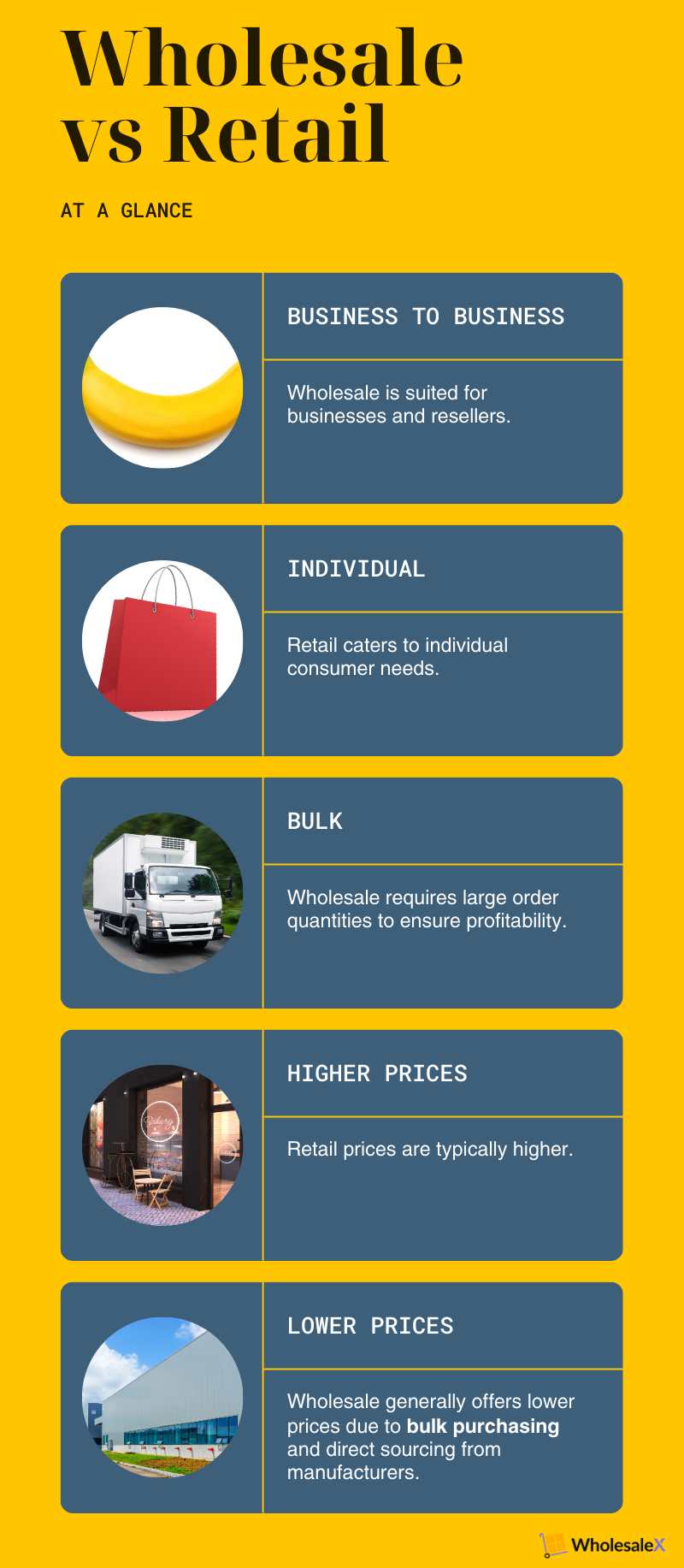
1. Buyer Type
- Wholesale: Goods are sold in bulk primarily to businesses, retailers, or distributors who intend to resell the products. The focus is on volume rather than individual sales.
- Retail: Goods are sold to end consumers, usually in smaller quantities or as individual items. The focus is on providing convenience, variety, and immediate availability.
2. Price Per Unit
- Wholesale: Typically lower per unit because of bulk buying. Lower margins are compensated for by higher sales volume.
- Retail: Higher per unit price, reflecting not just the wholesale cost but also added markup, taxes, and operational costs. Consumers pay for convenience, branding, and service.
3. Margins and Profitability
- Wholesale: Margins are usually smaller (10–30%), but profits scale with large orders. Wholesalers often negotiate minimum order quantities (MOQ) to ensure profitability.
- Retail: Margins are higher (30–60%), but overall volume per transaction is lower. Retailers must consider marketing, shelf space, and customer service costs when pricing products.
4. Sales Volume and Frequency
- Wholesale: Relies on bulk orders, often fewer transactions but with higher overall revenue per order.
- Retail: Relies on many small transactions. Consistency in sales and customer engagement is crucial.
5. Examples in Practice
- Clothing Example: A manufacturer sells 100 t-shirts at $5 each to a retailer. The retailer then sells individual t-shirts at $15 each to consumers.
- Electronics Example: A distributor sells laptops to a retail store for $400 per unit. The store sells them at $600 each, factoring in warranty, service, and operational costs.
- Foodservice Example: Bulk flour purchased by a bakery at $20 per 50kg sack is used to make dozens of bread loaves, each sold to customers at $2 per loaf.
6. Location and Market Variations
Prices and margin expectations vary depending on the region. For example:
- USA & UK: Standard retail margins for consumer goods typically range from 40 to 60%; wholesale margins are lower, but bulk buyers often receive additional discounts.
- India & Bangladesh: Wholesale markets might offer deeper discounts to retailers, and retail prices often include GST or other local taxes.
- UAE/Dubai: Electronics and imported goods may have added customs duties, affecting both wholesale and retail prices.
7. Additional Considerations
- Taxes and Fees: Wholesale prices usually exclude sales tax or VAT, whereas retail prices include them.
- Platform Costs: Online marketplaces and e-commerce stores often charge fees that affect retail pricing.
- Negotiation & Contracts: Wholesalers and retailers often negotiate minimum order quantities, payment terms, and return policies, an aspect rarely needed in standard retail.
From the Buyer & Seller POV
From the Seller’s Perspective
- Wholesale: Sellers focus on moving products in bulk at lower margins but higher volumes. The priority is efficiency, steady cash flow, and long-term partnerships.
- Retail: Sellers target end consumers, maximizing profit per unit with higher markups. Marketing, branding, and customer experience play a much larger role.
From the Buyer’s Perspective
- Wholesale: Buyers (often resellers) benefit from lower unit costs and bulk availability but need upfront capital and storage.
- Retail: Buyers get flexibility to purchase smaller quantities with convenience, but pay higher prices.
In short, wholesale is about scale and stability, while retail is about access and profit per item.

How to Calculate Wholesale vs Retail Price
Calculating wholesale and retail prices accurately is essential for profitability and competitiveness. Understanding the formulas, markup strategies, and real-world adjustments can help both wholesalers and retailers make informed pricing decisions.
Wholesale Price Calculation
Wholesale price is determined primarily by covering the cost of goods, operational overhead, and a reasonable profit margin. The basic formula is:
Wholesale Price = Cost of Goods Sold (COGS) + Overhead + Margin
Components explained:
- COGS: The total cost to produce or acquire the product (materials, manufacturing, shipping).
- Overhead: Business expenses such as warehouse rent, salaries, utilities, and logistics.
- Margin: Profit added per unit, typically lower for wholesale (10–30%).
Example:
- COGS for 100 t-shirts: $4 per shirt
- Overhead: $1 per shirt
- Margin: $0.50 per shirt
Wholesale Price: $4 + $1 + $0.50 = $5.50 per t-shirt
Wholesalers often set minimum order quantities (MOQ) to ensure profitability, e.g., selling at least 50 units per order.
Retail Price Calculation
Retail price incorporates the wholesale price plus markup, taxes, and any additional costs related to selling to end consumers:
Retail Price = Wholesale Price + Markup + Taxes + Platform/Transaction Fees
Components explained:
- Wholesale Price: Cost to acquire the product from the wholesaler.
- Markup: Added profit, typically 30–60% per unit.
- Taxes: Sales tax, VAT, GST, depending on the country.
- Platform/Transaction Fees: Marketplace commissions, payment processing, or shipping fees if applicable.
Example:
- Wholesale t-shirt: $5.50
- Markup: 50% → $2.75
- Taxes & platform fees: $0.75
Retail Price: $5.50 + $2.75 + $0.75 = $9.00 per t-shirt
Worked Example: Tax-Inclusive Retail Pricing
Suppose you are in a country with a 10% sales tax and your wholesale cost is $10 per unit:
- Add markup of 50%: $10 × 50% = $5 → Subtotal = $15
- Add sales tax (10%): $15 × 10% = $1.50
- Final retail price = $15 + $1.50 = $16.50 per unit
This calculation shows how taxes and markup combine to determine the final retail price.
Optional Add-Ons for More Accuracy
- Shipping & handling fees: Include if your business passes this cost to the consumer.
- Discounts or promotions: Factor seasonal or bulk discounts into your retail strategy.
- Platform fees: If selling on marketplaces (Shopify, Amazon, Etsy), account for commissions to maintain margin.
Tools and Templates
To simplify calculations, you can use:
- Interactive Calculator: Embed a wholesale-to-retail calculator on your website. Users can enter COGS, markup %, tax, and fees to instantly get the retail price.
- Downloadable Spreadsheet Template: Excel or Google Sheets with prebuilt formulas for batch calculations. Include fields for COGS, overhead, margin, markup, taxes, and platform fees.
Learn how to set shipping tax on your WooCommerce store easily.
Pricing Strategies for Wholesale vs Retail
Choosing the right pricing strategy is crucial for profitability, competitiveness, and customer satisfaction. Wholesale and retail businesses often use different approaches depending on their goals, industry, and market conditions.
Keystone Pricing
Keystone pricing is a strategy where the retail price is typically set at double the wholesale price. It is straightforward and widely used because it provides a quick method to set a profitable margin without complex calculations.
This approach is most commonly applied in industries such as clothing, accessories, and fashion items, where markup is predictable and consumers are accustomed to standard retail multiples.
For example, if a t-shirt costs $5 wholesale, it would be priced around $10 at retail, making the calculation simple and easy to implement for sellers.
✅ Pros: Quick, straightforward, widely accepted.
❌ Cons: May not account for taxes, platform fees, or shipping costs; can underprice premium products.
Cost-Plus Pricing
Cost-plus pricing is a method where the retail price is calculated by adding a predetermined percentage or fixed amount to the total cost, which includes the cost of goods sold (COGS) and overhead expenses.
This approach ensures that all costs are covered while generating a consistent profit margin. It works well in both wholesale and retail settings, especially in industries with predictable production and operational costs.
For instance, if an electronic item costs $100 to produce, and overhead is $20, applying a 40% margin would result in a retail price of $168. This strategy provides transparency and reliability for businesses looking to maintain consistent profitability.
✅ Pros: Ensures profit margin is covered.
❌ Cons: Doesn’t account for competitive pricing or consumer willingness to pay.
Competitive Pricing
Competitive pricing is a strategy where a business sets its prices based primarily on competitors’ pricing rather than internal costs alone.
This approach is particularly effective in saturated markets, such as consumer electronics or fast-moving consumer goods, where staying competitive can directly influence sales volume.
For example, if a competitor is selling a similar product at $50, a retailer might price their product between $48 and $52, depending on additional value, brand positioning, or service offered. Competitive pricing helps businesses remain relevant in the market, but it requires careful monitoring to avoid margin erosion.
✅ Pros: Keeps your business competitive and market-relevant.
❌ Cons: Can erode margins if cost structure is higher than competitors.
Dynamic Pricing (E-commerce & Retail)
Dynamic pricing is a flexible strategy where prices fluctuate based on factors such as demand, seasonality, stock availability, or competitor actions.
This is particularly useful for online stores, marketplaces, or perishable goods such as food and event tickets, where supply and demand can change rapidly.
For example, a product with a wholesale cost of $20 might normally retail for $40, but during peak demand, the price could rise to $50, or drop to $35 during a clearance sale. Dynamic pricing maximizes revenue and inventory turnover, but it requires continuous monitoring and, often, automated tools to implement effectively.
✅ Pros: Maximizes revenue and inventory turnover.
❌ Cons: Requires monitoring, automation tools, and market awareness.
Industry-Specific Strategy Notes
Clothing & Apparel:
- Keystone pricing is common, but factor in seasonal trends, returns, and size variations.
- Consider bundles (buy 2, get 1 free) to increase volume.
Electronics:
- Competitive pricing + dynamic pricing works best due to fast depreciation and frequent discounts.
- Wholesale buyers often expect negotiated bulk pricing.
Foodservice & Perishables:
- Use cost-plus pricing with a markup that accounts for spoilage and shelf life.
- Offer bulk discounts to restaurants or institutional buyers.
DTC & Marketplaces:
- Factor in platform fees (Shopify, Amazon, Etsy) when calculating retail price.
- Dynamic or psychological pricing ($19.99 vs $20) can boost conversions.
TL;DR: Pricing Strategies
Strategy Key Idea Best For Keystone Pricing Double the wholesale price Apparel, accessories Cost-Plus Pricing Add a percentage or a fixed margin to the total cost Electronics, retail goods Competitive Pricing Price relative to competitors Saturated markets Dynamic Pricing Adjust based on demand/stock e-commerce, perishable goods Industry-Specific Tailored for niche needs Clothing, electronics, foodservice, DTC
Which Pricing Strategy Should You Choose?
Choosing the right pricing strategy depends on your business type, product, and market conditions.
For Wholesale: Focus on strategies that ensure profitability at scale. Cost-plus pricing works well for predictable products, while value-based pricing suits businesses offering unique quality or service. Competitive pricing helps when selling in saturated markets.
For Retail: Keystone pricing is simple for apparel and accessories. Dynamic pricing fits e-commerce or perishable goods, while competitive pricing keeps your products market-relevant.
Quick Guide:
| Business Type | Product Type | Recommended Strategy |
|---|---|---|
| Wholesale | Bulk goods | Cost-Plus / Value-Based / Competitive |
| Niche items | Value-Based / Cost-Plus | |
| Retail | Electronics | Competitive / Dynamic |
| Apparel | Keystone / Dynamic / Competitive |
Case Studies: Real-World Examples
Wholesale Case Studies
INDI’s B2B Pricing Optimization
INDI, a wholesale distributor, sought to enhance its pricing strategy to improve competitiveness and efficiency. By implementing data-driven algorithms and automation, INDI tailored its pricing models to better align with market demands and customer segments.
This approach not only streamlined their pricing processes but also positioned INDI to respond more agilely to market fluctuations, ultimately driving growth and profitability in their wholesale operations.
Value-Based Pricing in Wholesale Distribution
A wholesale distribution company adopted a value-based pricing strategy to differentiate itself in a competitive market. By focusing on the unique value it provided to customers, such as superior product quality and exceptional service, the company was able to justify higher prices.
This strategy led to enhanced customer loyalty and sustainable profitability, demonstrating the effectiveness of aligning pricing with perceived value in wholesale markets.
Retail Case Studies
MOM’s Organic Market’s Price Optimization
MOM’s Organic Market, a regional grocery chain, utilized ClearDemand’s price optimization platform to transform its manual pricing processes into a data-driven strategy. By automating pricing decisions and optimizing prices based on elasticity, the company achieved a 20% uplift in gross margin across key categories.
This approach not only increased profitability but also improved price compliance and operational efficiency, showcasing the benefits of advanced pricing technologies in retail.
Rocky Mountain Chocolate Factory’s Dynamic Pricing
Rocky Mountain Chocolate Factory implemented a dynamic pricing strategy, adjusting prices quarterly in response to fluctuating cocoa costs.
This approach allowed the company to maintain profit margins despite volatile raw material prices. Since adopting this strategy, the company reported a 200% increase in retail gross profit, highlighting the effectiveness of responsive pricing strategies in retail environments.
Learn more about Gross Margin for a Boutique Wholesale Coffee Roaster in 2025.
International Considerations (Location-based Coverage)
Pricing strategies are not one-size-fits-all; wholesale and retail prices can vary significantly across countries due to factors like taxes, duties, shipping costs, and market expectations.
Understanding these differences is crucial for businesses operating internationally or sourcing products from other regions.
| Factors influencing the pricing | USA | UK | India | Bangladesh | Dubai |
|---|---|---|---|---|---|
| Tax / Duty | Sales tax varies by state (0–10%) | VAT 20% included | GST 5–18% depending on product | VAT is not widely applied; local wholesale culture dominates | Import duties and VAT apply; electronics are subject to ~5–15% duty |
| Typical Wholesale Margin | 10–30% | 10–25% | 15–30% | 10–20% | 10–25% |
| Typical Retail Margin | 30–60% | 30–50% | 25–50% | 25–40% | 30–50% |
| Minimum Order Quantity (MOQ) | Often required, e.g., 50–100 units | Often required, e.g., 50–100 units | Usually 50+ units | Often negotiable, culturally flexible | 50–100 units typical |
| Pricing Considerations | State-specific taxes, shipping | VAT-inclusive pricing, shipping | GST compliance, local taxes | Informal negotiation, bulk discounts common | Duty and VAT impact electronics and imported goods |
| Example: Clothing | Wholesale: $5/t-shirt → Retail: $15 | Wholesale: £4/t-shirt → Retail: £12 | Wholesale: ₹150/t-shirt → Retail: ₹400 | Wholesale: ৳400/t-shirt → Retail: ৳1000 | Wholesale: $6/t-shirt → Retail: $18 |
| Example: Electronics | Wholesale: $200 → Retail: $350 | Wholesale: £180 → Retail: £300 | Wholesale: ₹8000 → Retail: ₹12000 | Wholesale: ৳8000 → Retail: ৳12000 | Wholesale: $220 → Retail: $360 |
💡 Key Takeaways for International Pricing
- Always account for taxes, duties, and compliance when calculating retail prices.
- Wholesale buyers in many countries benefit from tax exemptions or credits.
- Retail margins may differ significantly due to local purchasing power, competition, and market expectations.
- Using location-specific examples helps both businesses and buyers understand the real cost differences.
Common Mistakes to Avoid
When dealing with wholesale and retail pricing, many businesses stumble over similar pitfalls. Here are the most common ones to watch out for:
- Ignoring True Costs: Not factoring in shipping, storage, packaging, or transaction fees can shrink profit margins quickly.
- Setting Prices Too Close: If wholesale and retail prices don’t have a clear gap, resellers lose incentive, and customers get confused.
- Inconsistent Discounts: Offering random or excessive discounts disrupts both wholesale partnerships and retail trust.
- Neglecting Market Research: Copying competitors’ prices without considering your costs, demand, or brand positioning often backfires.
- Overcomplicating Pricing: Too many tiers or hidden fees frustrate buyers. Simplicity encourages trust and repeat purchases.
Avoiding these mistakes ensures both wholesale and retail strategies remain profitable and sustainable.
FAQs
How much cheaper is wholesale than retail?
Wholesale prices are typically 30–70% lower than retail prices, depending on the industry, volume, and margins.
How to calculate wholesale vs retail price difference?
Wholesale price = COGS + overhead + margin.
Retail price = Wholesale price + markup + taxes + fees.
The difference is the additional markup and costs added at the retail level.
Why is the wholesale price lower than the retail price?
Wholesale prices are lower because wholesalers sell in bulk with smaller margins, while retailers add markup to cover costs and generate profit on individual sales.
Is it worth buying wholesale instead of retail?
Buying wholesale is worthwhile if you need large quantities at lower per-unit costs. For small purchases, retail may be more convenient despite higher prices.
What is the difference between wholesale and retail prices in clothing?
In clothing, wholesale allows bulk purchases at 30–50% of the retail price. Retail pricing covers single-item sales, seasonal demand, and store/online overhead.
What is the difference between wholesale and retail price per unit?
Wholesale per-unit cost is lower due to bulk sales. Retail per-unit cost is higher, factoring in markup, taxes, and additional fees.
Take Advantage of the Wholesale Pricing Model with WholesaleX

Running a wholesale business on WooCommerce isn’t always simple. Offering different wholesale pricing, bulk discounts, tax exemptions, and shipping rules can quickly become overwhelming. That’s where WholesaleX steps in, making B2B and B2C wholesaling hassle-free, so you can reach more customers and increase your profits without the usual struggles.
That’s where WholesaleX steps in, so you can reach more customers and increase your profits without the usual struggles.
With WholesaleX, you can manage bulk orders, dynamic pricing, and customer-specific discounts all from a single dashboard. Its unique Dynamic Rule system lets you set flexible pricing and discounts based on product type, customer role, purchase quantity, or even payment method. For example:
- Multi-tiered pricing: reward customers with lower prices when they buy in larger volumes.
- Cart-based discounts: offer deals based on total quantity, weight, or cart value.
- Payment method incentives: give discounts for preferred payment options or add extra fees to discourage others.
- BOGO (Buy One, Get One): set promotional offers on selected products.
- Tax and shipping rules: apply tax exemptions or fixed/free shipping options per customer group.
- Product visibility control: show or hide products for specific customers.
And WholesaleX goes beyond pricing rules:
- Custom User Roles → create tailored roles with specific discounts and access levels.
- Bulk Ordering System → fast ordering with search, category, and tag filters.
- WholesaleX Wallet → let customers pre-load funds for seamless, fee-free payments.
- Built-in Conversations → communicate directly with customers inside your store.
- Quote Requests → negotiate pricing with “Request a Quote” functionality.
- Private Store Option → lock your wholesale catalog behind login access.
If you’re looking for a reliable way to bring wholesale functionality into your WooCommerce store and take your B2B business to the next level, WholesaleX offers an all-in-one solution.
Conclusion
Understanding the difference between wholesale and retail pricing is essential for both businesses and buyers. Wholesale focuses on bulk sales with lower margins, while retail emphasizes individual sales with higher markups.
The right approach depends on your role. Sellers aim for profit, volume, and market reach, while buyers balance cost savings with convenience.
By applying proper calculations, avoiding common mistakes, and considering location, industry, and market-specific factors, you can make informed pricing decisions.
Use the examples, case studies, calculators, and templates provided in this guide to set effective wholesale and retail prices that maximize profitability and maintain competitive advantage.
For more helpful tips, stay connected with our LinkedIn Newsletter.

